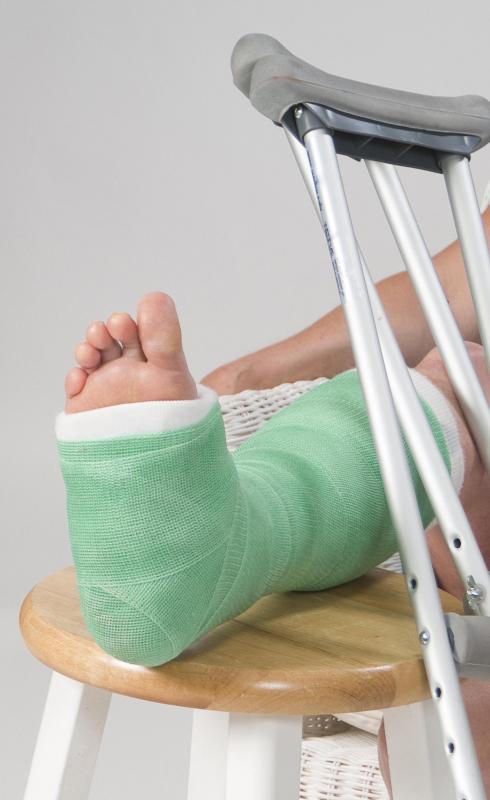At WiseGEEK, we're committed to delivering accurate, trustworthy information. Our expert-authored content is rigorously fact-checked and sourced from credible authorities. Discover how we uphold the highest standards in providing you with reliable knowledge.
What Is the Cause of Clubfoot?
As of 2011, medical researchers have yet to establish an exact cause of clubfoot. In the past, it was generally thought that the baby’s feet were somehow damaged during pregnancy having, become cramped or twisted by the position of the baby in the mother’s uterus. While this long-held belief has been discounted by research, no definitive factors have been established that account for the development of clubfoot. Science has been able, though, to narrow down some contributing factors and possible causes, such as the mother's environment and family genetics.
One possible cause of clubfoot involves the general environment surrounding the mother. Studies have linked infection as well as the mother's lifestyle choices of drug use and cigarette smoking to the development of clubfoot in an infant. These are regarded as risk factors for having an infant born with this condition.

Another possible cause of clubfoot is simply genetics, as seen in family history. The medical community feels there is good evidence a genetic component is involved in causing clubfoot. Studies have indicated that about 25% of infants born with clubfoot have a relative who was also born with the condition as well. No specific abnormal gene has been identified that results in this condition. The general opinion among researchers, however, is that it is the interaction of a number of genes along with non-genetic factors that result in this condition.
Clubfoot is regarded as a birth defect since it only develops during fetal life. It is a relatively common birth defect, may affect either one or both feet, and can be mild or severe. A baby born with this condition has misaligned joints along with an abnormal shape to the bones in one or both feet. The tendons on the back and inside of the foot are shortened. These shortened tendons pull on the foot so that the toes point both downward and inward.
Depending upon the severity of the condition, the attending obstetrician will most likely be able to diagnose clubfoot quickly after birth. Fortunately, there are successful treatments for clubfoot. It is important, however, that the treatments begin as soon as possible after birth.
Initially, infants born with clubfoot are treated by one of two methods of stretching. The Ponseti method involves manipulating the foot into the correct position and then placing a cast on it. Another approach is the French method whereby the foot is manipulated daily and held into place by adhesive tape. Severe cases of clubfoot, though, may need to be dealt with surgically.
AS FEATURED ON:
AS FEATURED ON:











Discuss this Article
Post your comments